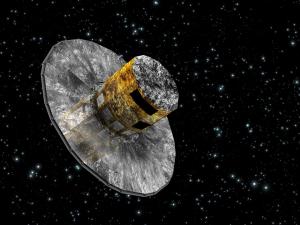Blog
Billions and Billions
26 December 2013
 ESA
ESAThe Gaia mission launched this month with a mission to make a 3D map the Milky Way galaxy.
It’s hard to overstate just how large of a task this is. There are 100 – 200 billion stars in the Milky Way, and Gaia plans to map about 1% of them. Not just determine their position, but measure their parallax (distance), Doppler motion (radial speed) and proper motion (motion through the sky). It will make spectroscopic measurements, from which we can determine things like temperature, composition, and gravitational strength.
Measuring a billion stars in this way takes a huge amount of data. It will amount to about 200 terabytes of data. All of that will need to be processed and analyzed.
The results will be a catalog of more than a billion stars. It will also have data on quasars, galaxies and exoplanets that it gathers as a consequence of its primary mission. When data starts getting released from the mission it will be a very big deal.
This is what big astronomy is all about. Terabytes of data on billions of objects.
And eventually that data becomes public information.